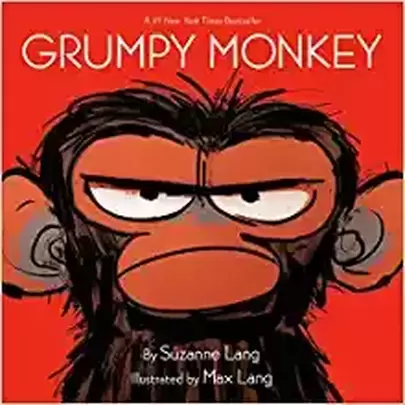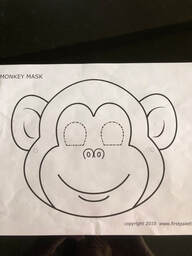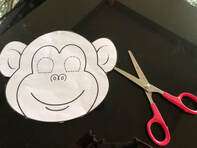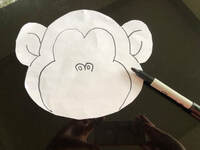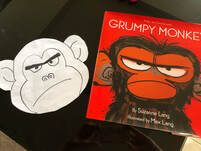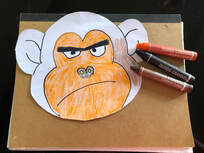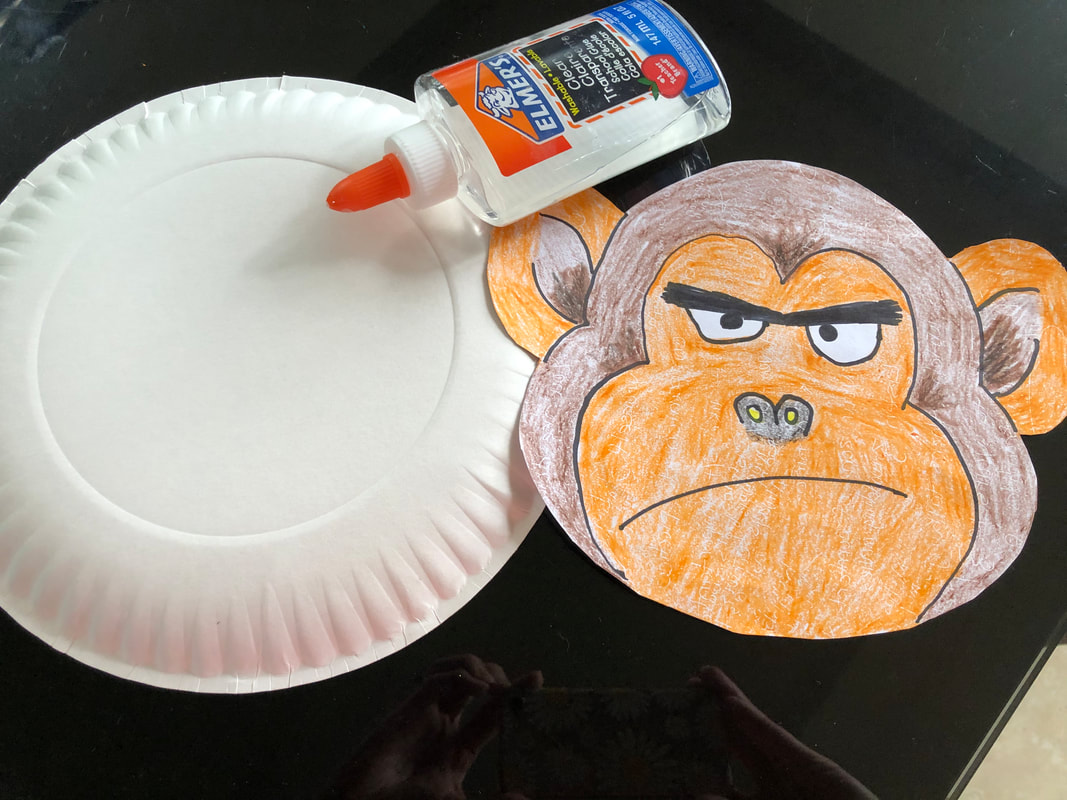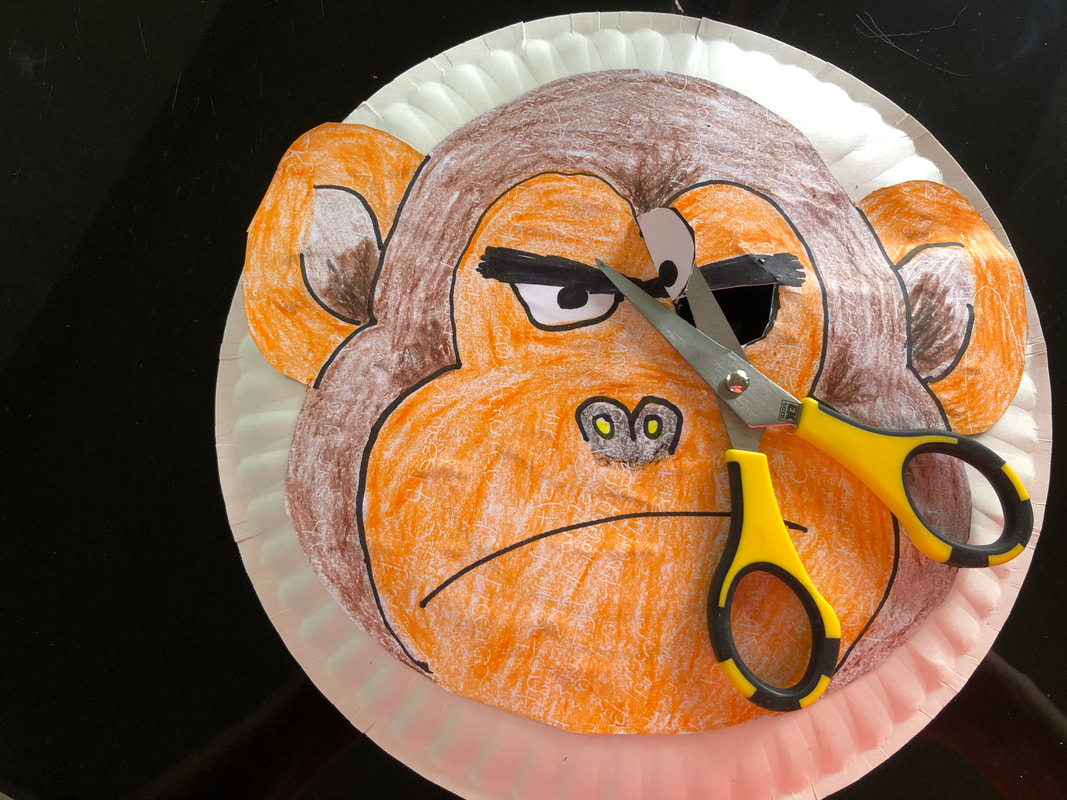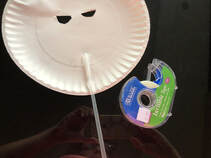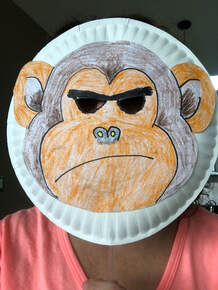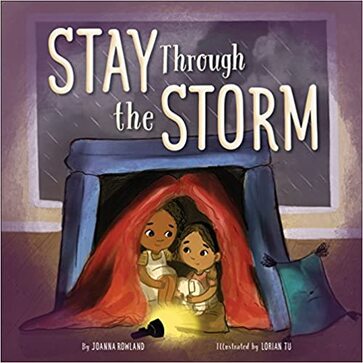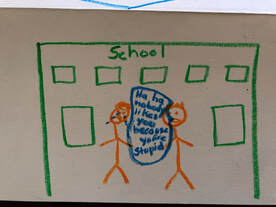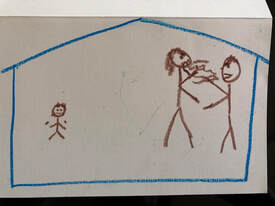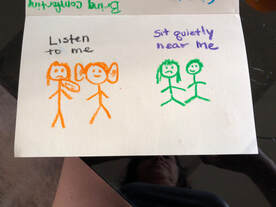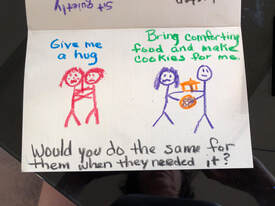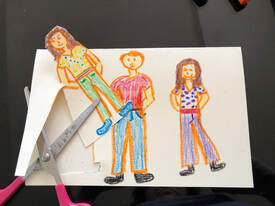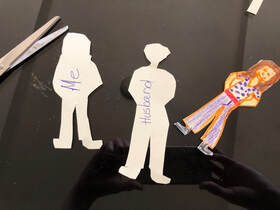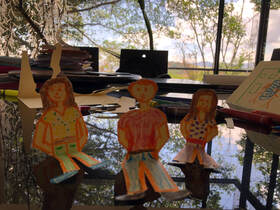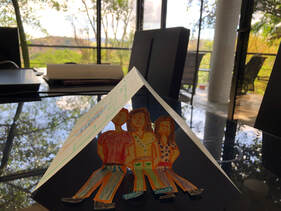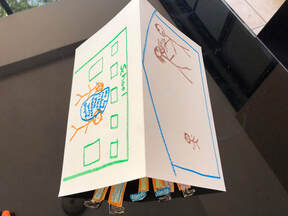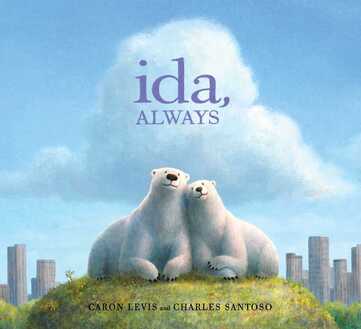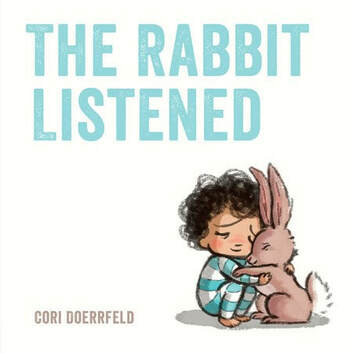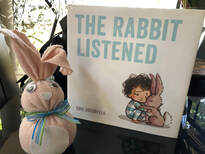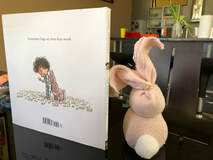A Book Review of Grumpy Monkey
-with constant togetherness, major changes in routine, boredom, fewer emotional and social outlets, worry about the future, money issues, etc., I would venture to guess that grumpy monkey business is now at an all-time high! In other words, it is likely that we are all going bananas! For that reason, I have decided to review the Grumpy Monkey book this month for all of you "grumpy monkeys" out there (well, and here too!) Grumpy Monkey is a New York Times bestselling picture book that addresses that vague, all-the-big-feelings-at-once mood of GRUMPINESS. Jim Panzee had a day where nothing felt quite right. His jungle friends noticed his grumpiness, but Jim was in denial and insisted repeatedly, "I am not grumpy!" They pointed out his body language that showed otherwise. Marabou said, "You're all hunched," so Jim straightened his body. Lemur noticed that Jim's eyebrows were all bunched up and snake noticed a frown on Jim's face. Jim changed his body language, but the jungle friends knew that he was pretending. Even though he was trying not to look grumpy on the outside, Jim still felt grumpy on the inside. However, Jim still insisted that he was NOT grumpy. Sound familiar? Many times we don't notice ourselves feeling or acting grumpy. Children, as well as adults, tend to deny being grumpy when its pointed out. But grumpiness not only affects ourselves, but those around us, and sometimes it's even catchy! Grumpiness is often so many feelings lumped together into one that it is difficult to recognize in ourselves and even more difficult to pinpoint the cause. The animals couldn't understand why Jim was grumpy because it was such a beautiful day. The jungle friends tried to cheer him up, suggesting a mountain of ideas, but Jim didn't feel like doing anything. All of their suggestions were things that made his friends feel happy, but not Jim, especially not on this day. The efforts of his friends became increasingly annoying and Jim reached his limit. Finally, his mood escalated further and he went BANANAS, screamed at the top of his lungs, "I AM NOT GRUMPY!" and stormed off. After feeling bad for yelling at his friends and noticing that his friend, Norman, had become grumpy too, Jim finally accepted that he was grumpy. Accepting that feeling for himself, and his friends acknowledging his feeling, when he was ready, was all he really needed to start to feel a little better. In this book, Suzanne Lang promotes social-emotional learning by showing children the importance of reading other's body language. Another important emotional lesson is that sometimes cheering up is not what we need. Sometimes, we just need to feel grumpy and for that to be okay. Accepting your own and acknowledging other's feelings, when they are ready, can go a long way in being able to sit with your feelings and start to feel better. The illustrator, Max Lang, does a beautiful job portraying the distinct facial expressions and body language of Jim and his jungle friends. The illustrations are vivid and fun, adding to the enjoyment of the story. Suzanne and Max Lang have created a series of Grumpy Monkey books that are equally enjoyable. Check them out at https://www.penguinrandomhouse.com/authors/222967/suzanne-lang. Below I have an activity suggestion to go along with the book! Activity Idea for Grumpy MonkeyWe are going to make a Grumpy Monkey mask, so your child can hold it up when he/she is feeling grumpy and doesn't want to be bothered. They may even lend it to you, or other members of the family, when they notice you are having a grumpy day. Maybe it will help lighten the mood! Materials Needed: -printed copy of monkey face from this link https://www.firstpalette.com/pdf/monkeymask.pdf -black marker -scissors -crayons -glue -tape -paper plate -craft stick or straw
3 Comments
A Book Review of Stay Through the Storm
Why would we broach the subject of suicide with young children? It's very painful for us to accept that suicide touches lives of young children, but it does. They may have teenage or adult relatives or friends that die due to suicide. They may have suicidal thoughts themselves or may even have made attempts. Even though successful suicides are rare in children below age 10, children as young as 5 years old have successfully committed suicide. Suicidal thoughts at a young age are a major predictor of later successful suicide. Therefore, it is important to address coping with these feelings from a young age. Joanna Rowland, the author, approaches this intense topic in an age-appropriate and gentle manner. Her theme throughout the book stresses the power of friendship to help us through life's storms. The story helps children understand the importance of reaching out or accepting the help of others when their lives feel full of darkness. "Stay" is a repeated word throughout the dialogue. "Stay" and allow me to care for you. Together we can conquer your hopeless, scared feelings. Tell me about your feelings, I will understand because I am human and I probably felt that way at one time or another too. This will end and we'll get to the other side of it together. If the feeling comes again, I will be here for you then too. This book is an example of humanity at its best. Through the illustrations, Lorian Tu, portrays hopefulness through vivid colors. The illustration of the fort on the cover and in the book supports the theme that you are safe and protected and can be helped through tough times. I highly recommend this book for all children, especially those who have been through or are going through dark and difficult times. This gentle, beautiful story provides coping skills, reassurance and hope to the youngest among us. Check out this author's website for excellent books on mental health and other topics for young children. https://www.writerrowland.com/ Activity Idea for Stay through the StormHave a discussion with your child after reading the book. The following questions can help. 1. If you were feeling really big feelings like sad, scared, confused, hopeless or worried, who would you want to be with you to help you(can be more than one person)? 2. How would that person(s) know you're having big feelings and that you want them to stay with you? 3. What do you think that person can do with you to help you feel cared about and safe? 4. Who do you think would want YOU with them if they were having really big feelings? After the discussion, make a fort/tent with the child and include their safe people inside the tent. Directions are below.
And... in the words of Mr. Rogers...
A Book Review of ida, ALWAYS
This book was inspired by a true story of a real polar bear friendship at the Central Park Zoo in New York City. ida ALWAYS presents love and loss in a deeply touching and insightful manner. It taps deep into the human (and bear) experience of connection and the deep feelings that illness and death elicit in all of us. Ms. Levis describes intense sensory experiences of sounds, sights, touch, smells and taste to gently, but deeply, address the human emotion. They are successful in explaining death and dying in a clear, matter of fact way rather than resorting to abstract concepts that confuse children further. The use of sensory experiences, along with a well done, age-appropriate explanation of death and dying sets this book apart from other books on loss. It is a true lesson for adults to understand the importance of informing and including children in the process of death of a loved one or their own impending death. As adults, our knee-jerk response in dealing with a child's experience of the death and dying of a loved one, or their own impending death is to shield them from it. After all, our role as parents, teachers, family members is to protect children. Shouldn't we then continue this role when it comes to death and dying? One of the most difficult things in this world is seeing a child in pain, whether it be physical or emotional. It's easier for us to pretend with the child and give them false hope. However, the reality is that in trying to protect the child, as adults we are actually causing the child to feel more pain in the long run. We must allow our children to feel and understand throughout the process. We cannot protect our kids from the realities of life. We can offer them age-appropriate, clear explanations that make life less mysterious and less scary. We can prepare them intellectually and emotionally. Even though they will go through the pain, as we do as adults, they will have the opportunity to express their strong feelings throughout the process and begin to grieve. They will feel safe asking questions and expressing their love to their loved ones in their last precious days together. This book is an excellent way to start this conversation. Gus and Ida, the bear friends in the story, are granted the opportunity to feel. The very caring and compassionate zookeeper, Sonya, does a beautiful job explaining Ida's illness and impending death to Gus in a gentle but straightforward manner. The story moves forward with Gus and Ida expressing their very strong feelings together. They show their anger at the situation by growling, howling, stomping and snarling together. They express their sadness together and the unknown and the wonderings of what will be. Through Charles Santoso's beautiful illustrations, you can feel the deep connection between the bears and the intense feelings they experience. The story oozes with compassion and empathy through all of the characters. Gus's knowledge of Ida's impending death allows him to be part of the care-taking process. He is able to do what he can to help care for her in the last days of her life. This care-taking process is crucial and helps tremendously with our feelings of helplessness in the situation. As I remember back to the deaths of my grandparents and parents, a very warm memory that I carry with me, is the small things I was able to do that made me feel like I was playing a role in helping them feel comfortable in their dying moments. The story goes on to show the transition of Gus's life after Ida's death. The sadness shown through Gus's character allows the readers to sit with the sadness. The quote in the book that feels the most important to me is "You don't have to see it to feel it." This quote has a double meaning in the story describing the sensory experiences of the bustling city around them, in addition to Gus's ability to feel Ida with him after her death. I highly recommend this book for children, and adults, who are experiencing any loss, especially one through illness or their own impending death. I have included an activity below to help personalize this grieving process for the child. Activity Idea for ida, ALWAYSA very useful exercise to assist with grieving is to write a letter to the loved one that has passed. This can be done repeatedly to express feelings, things remembered and missed, and as a way to feel you are updating them with ongoing life. I have composed a letter template that can be completed through writing or drawing or both, that can be used with your child, client or student to assist them through the grieving process. The template focuses on the ideas expressed in the book. It might be very helpful to first have the child answer the questions as Gus might answer them if he was writing a letter to Ida. Then, they can personalize to themselves. I recommend encouraging children to draw pictures for the loved one. This has the added benefit of providing the child with expressing these thoughts and memories through the sensory experience of drawing and coloring, which is therapeutic in itself. This letter likely will need to be done over several sessions as to not be overwhelming. Younger children may need reminders of some of their memories and more prompting. The letter ideas are written below and I have included a link to a printable pdf file with room for pictures below. Dear_________________________, 1. I remember when we: 2. When you were sick, it was so sad when: it was so scary when: 3. I wish we could have: 4. You made me laugh when: 5. I liked helping you with: 6. The things I miss the most about you are: 7. These are the things I hear, see, taste, smell, touch, that remind me of you: Love, _________________
A Book Review of The Rabbit Listened
Having a friend just sitting beside you through a tough time can be incredibly comforting and therapeutic. When the person chooses to talk, being with them is being there to listen. Just listen. When a friend or loved one is hurting, we have a tendency to want to fix it. We want them to be happy. We can't tolerate seeing them in pain. But sometimes in life, we just need to sit with our feelings for awhile. It can be deeply comforting to have someone you care about joining you in sitting with your feelings. This helps you not feel so alone. In her recent Children's book, The Rabbit Listened, Cori Doerrfeld describes the concept of "being with" beautifully. She presents the concept at a level very relatable to young children. This book is simple, yet powerful. While it is geared toward children ages 3- 7, we can all learn a great deal from this book. The story starts out with Taylor, a young girl, building a very special tower out of blocks that elicits much pride. Out of nowhere, a flock of birds fly by and knock down her prized castle. Her creation is ruined. Ugh. The dreaded experience that evokes big feelings familiar to all children. Ms. Doerrfeld does an amazing job illustrating Taylor's strong feelings. As expected, a parade of well-meaning friends come and want to help Taylor. Chicken tries to make her talk, Bear tries to get her to growl and shout and elephant tries to help her rebuild. Taylor is not interested in any of this. Many other friends come by to try and make it better for Taylor. Nothing works. Until finally and quietly... Rabbit slowly comes up and sits very close to Taylor so she can feel his warm body. The Rabbit sits in silence by her side. He listens when she feels like talking, or shouting, and listens closely to all of her ideas. After Taylor goes through the process of working through her feelings at her own pace, she decides to rebuild. At that point, Rabbit is still by her side sharing her joy of being ready to rebuild. The Rabbit Listened is helpful to ALL children(parents, therapists and teachers too!) This book is a frequent go-to in my practice with children who have difficulty regulating their emotions. It provides insight to these children as to what they may need to calm themselves. The book also provides insight to their caregivers as to how to manage their child's big feelings. Additionally, I utilize this book for kids that have recently gone through big struggles in their life, whether it be a death or a separation in the family. In addition to gaining personal insight, this story teaches children how to be a good friend and to help others who may be struggling. The Rabbit Listened covers a universal topic that can remind us all that simply "being with" someone is the best gift you can give. After reading the book, why not create a Rabbit who will sit quietly and listen to you? Or that you can lend to your family members or friends when they are struggling? See below for instructions. Activity Idea for The Rabbit ListenedMaking a sock bunny together with the child and discussing how the bunny can sit beside him/her when he/she is having big feelings is a great therapeutic activity. They can also talk to the bunny about their big feelings. The bunny is simply there to sit and listen. The bunny can also be used for them to help other people and lend him out as a sitting buddy to a family member or friend who is struggling. To drive the concept home, I do role playing in therapy, having the child pretend they are sad, mad, or scared and setting the bunny quietly next to them. As the therapist, I pretend to have big feelings and the child then places the bunny next to me. We then discuss how it feels to have someone next to you, sharing your big feelings and listening. We also discuss situations that have occurred in their life when it would have been helpful to have someone sit by their side quietly. We discuss situations their family or friends may have experienced that they think would have been helpful to sit quietly by their side and how this might make them feel. Materials needed An adult-sized sock 2 cups of rice measuring cup with spout 2 large sturdy rubber bands felt or foam sheet large pompom googly eyes ribbon tacky craft glue sharp scissors
|
Follow me on Twitter, Pinterest and LinkedIn
Categories
All
|
||||||||||||||||||||
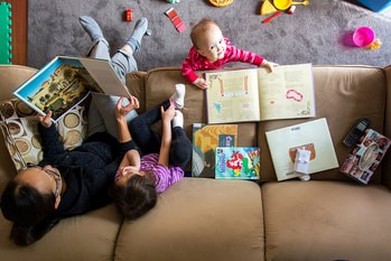
 RSS Feed
RSS Feed
